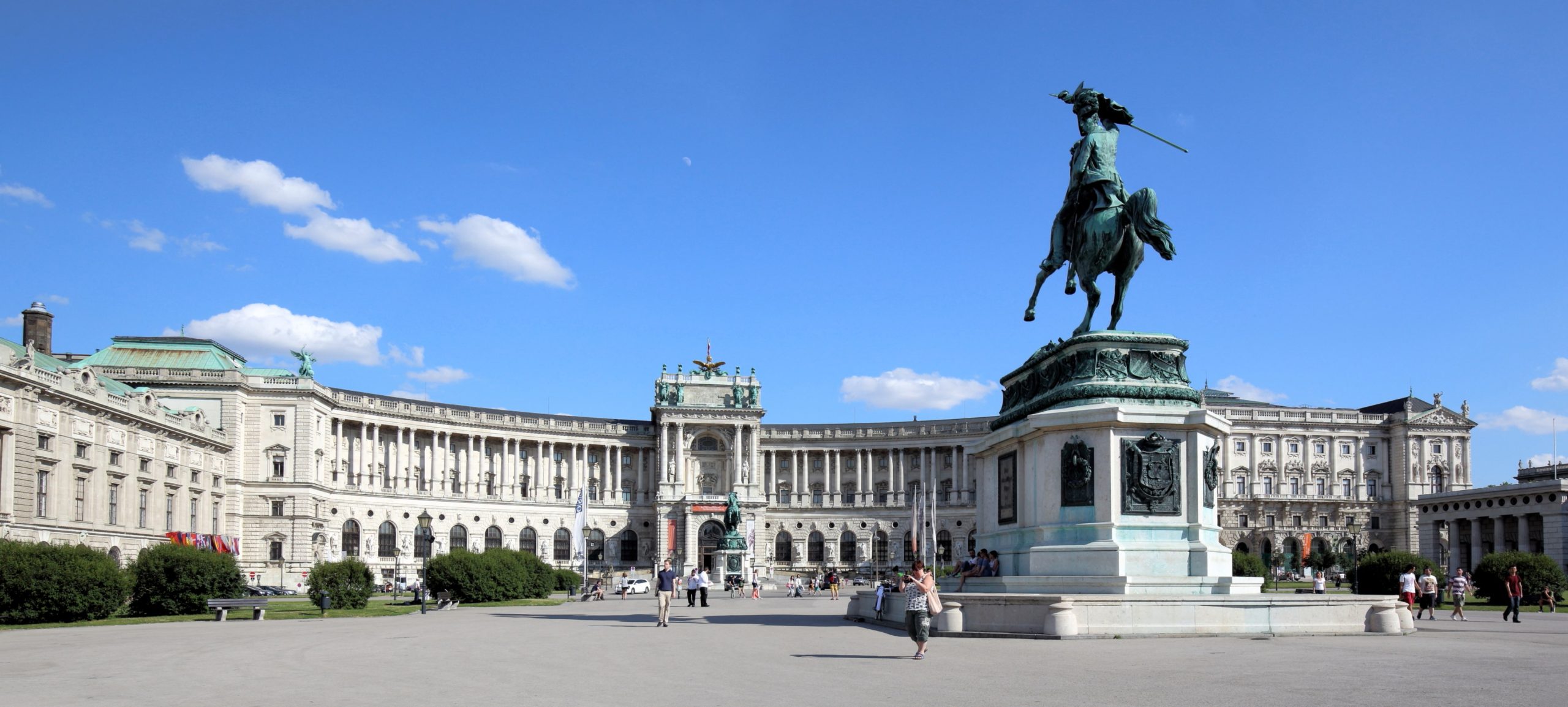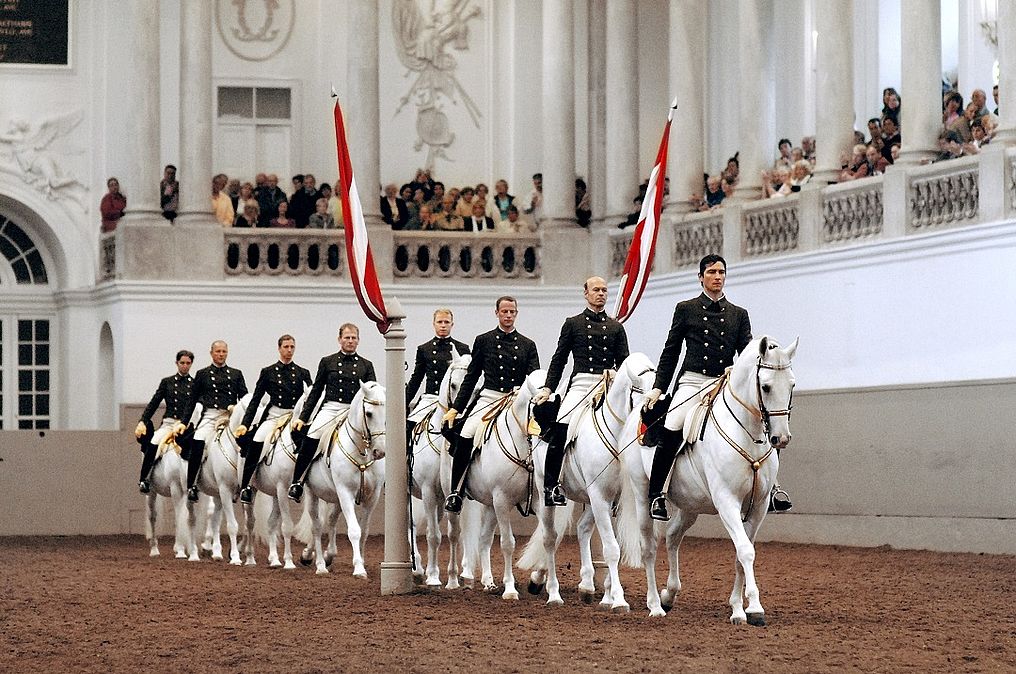Vienna
Vienna serves as the capital city of Austria offering a blend of modern architecture with imperial traditions. Vienna is known for its two famous palaces, cultural events, museums, opera houses, traditional coffee houses, and wine taverns showcasing its Viennese charm.
Vienna city is filled with architectural delights, music, art, culture, and fine food, and it’s extremely convenient to commute in Vienna due to its outstanding tram service.
Geographically its located in the North-eastern region making it easier for visitors and travelers to explore nearby snow-capped mountainous regions and beautiful countryside villages as well as day trips to various cities.
-
Destination
Sightseeing
- Hofburg Palace
- Schonbrunn Palace
- Belvedere Palace
- Spanish Riding School
- Stephan’s Cathedral
- Imperial Treasury
- Giant Ferris Wheel
- Vienna State Opera
- Museums In Vienna

Hofburg Palace was formerly the palace of the Habsburg dynasty and the residence of Habsburg Emperors. Today, it’s the official residence and workplace of the President of Austria which is located exactly in the city centre.
It’s one of the biggest palace complexes in the world where you can marvel at the splendour of the former imperial family which covers groups of buildings, courtyards, and private rooms.
The main attraction here is the imperial apartments, Sisi museum, Silver collection, Imperial Chapel, and the Imperial treasury which showcases the valuable collection of treasures of the European history with a major highlight being the Imperial Crown of the Holy Roman Empire of the German Nation.

The former summer residence is a top tourist attraction known for its imperial rooms and spectacular gardens striving its historical significance with its unique layout and Baroque complex.
The palace is home to 1441 rooms including those once used by Empress Maria Theresa are richly furnished in Rococo style. Another notable feature of this place is its gardens which are magnificent and decorated impressively with fountains, statues, and monuments as well as the Maze.
If you’re traveling with kids, there’s a children's museum wherein your kids can dress themselves as the Emperor and Empresses. Due to the popularity of this palace, it's usually crowded and there are long queues at the ticket counter so it’s advisable to purchase Skip the line tickets well in advance.

It’s a historic complex with TWO Baroque Palaces famously known as Upper and Lower Belvedere and also home to most of Austria’s valuable art collections.
Upper Palace hosts the art collection and portraying Austria’s most famous artwork “The Kiss” by Gustav Klimt. It includes the ground hall, ceremonial staircase, Carlone hall, and the marble hall hosting a lot of sculptures, paintings, and a splendid ceiling fresco.
The Lower Belvedere acted as the residence of Prince Eugene – the lavishness is reflected in its Grotesque Hall, Marble gallery, and hall.
The gardens of this palace represent the Baroque landscape architecture and beautiful fountains, the building’s façade is reflected in the pool created outside the palace.

One of the renowned riding schools in the world, Spanish Riding school offers the highest standard of classical horsemanship within the ambience of the Imperial Palace.
These are the Spanish horses of the Lipizzan breed which are exclusively used at the school. Gala performances are held and the visitors experience the Lippizaners performances in the most stunning riding hall.
It is advisable to purchase tickets well in advance as they sell out quickly. It is highly recommended to purchase a package ticket which also takes you through a behind-the-scenes tour, visit stables as well as a morning training session.
It’s impossible to see Vienna without the horses pulling carriages in the city centre and the Lipizzaner stallion of this school.

St. Stephan’s Cathedral is a Gothic structure building and symbolic to Vienna located within the city centre. It has four towers with the south tower being the tallest, one can enjoy incredible views over Vienna through the tower room which can be reached via climbing 343 steps. The North tower hosts the massive best-known Pummerin Bell and there’s a lift taking visitors to a viewing platform.
Additionally, the cathedral has valuable altars and side chapels, and impressive treasures including relics decorated with precious stones and gold, and various other artifacts.

Imperial Treasury at the Hofburg Palace holds the precious treasures & crown jewels of European history covering about over 1000 years. The entrance of the treasury is at the oldest part of the palace.
The two main highlights of this treasure-trove are – “The Imperial Crown of the Holy Roman Empire of the German Nation” (The highly symbolic Octagonal Crown was used to crown the Empire’s Emperors and is decorated with biblical references) & “The Austrian Imperial Crown” (It served as the private crown for Emperor Rudolf II).
There are several other exhibits of treasures including the Burgundian Treasure from the 15th century, swords, one of the biggest emeralds, a narwhal tusk believed to be from a unicorn. This place is a must-visit for people interested in history and even those who enjoy watching gems and treasuries.

It’s a thrilling ride of about 10-20 minutes and famous Viennese skyline landmarks providing impressive views over the city on the Danube river.
Giant Ferris Wheel is one of the top tourist attractions and is located at the entrance of the Prater amusement park which is visible from far away. One can even enjoy a romantic dinner at the Giant Ferris wheel.
Panorama museum exhibits the illustrations of the history of the wheel through the help of audio-visual installations.

It’s one of the most attractive and largest theatres in the world which has hosted many composers, soloists, ballet performances, and dancers. The massive opera was built in early French Renaissance style with a grand staircase and has a seating capacity of about 2000 people.
It offers year-round diverse programs of Operas and ballets. If you wish to enjoy one of the best performances in this opera house – it’s a must to plan your holiday and stay accordingly. For one night this opera transforms into Vienna Opera Ball which represents the biggest meeting point for the artists, politicians, and businessmen around the world.

Vienna is home to more than 100 museums representing collections of artworks from renowned artists and literature, illusions & unusual museums, technology and transport museums.
- Kunsthistorisches Museum– This museum is housed near the Imperial Palace to showcase the extensive collections of the Royal Habsburgs. Due to its excellent collection of arrays of artwork and the largest Bruegel collection makes this museum is one of the prominent ones in the world.
- Albertina Museum– This museum hosts the masterpieces in its collection with the largest and most valuable graphical collections. Its treasure comprises over a million pieces of artwork and 60000 drawings. It also has the collection of the modern time and Picasso. Temporary exhibits are also kept for viewing along with permanent showcases. English guided tours are available along with informative guides.
- Sigmund Freud Museum– Recently renovated museum opens its doors for visitors to experience Freud’s private rooms where he worked and lived. Even the visitors would ring the bell on the door downstairs of the world-famous professor like his patients did some 100 years ago. This museum lives the spirit of Freud, his archives, and his library.
- Museum Quartier– It’s the largest cultural quarter in the world combining institutions of art fields, restaurants, cafes, and shops in its 60000 sqft area with an ambiance of architectural buildings. It sets as a perfect example for retaining the old and experiencing the new and enjoying both together.
- Leopold Museum– Leopold holds the masterworks of modern art collected by Dr. Rudolf Leopold – a passionate art lover. It houses the collection of Viennese art nouveau, the largest Egon Schiele collection in the world as well as the masterpieces from the artist Gustav Klimt.
- Hundertwasserhaus & Kunst Haus Wien– It’s an exhibition centre depicting the permanent works of the painter Friedensreich Hundertwasser. His work included giving unique character to the buildings by irregular forms, colorful areas, irregular elements of glass, metals, bricks, ceramic tiles, etc. Kunst Haus Wien houses his exhibitions on two floors and the additional two floors are dedicated to changing exhibitions of contemporary art.
- Unusual Museums– These museums are a source of interesting wow moments, entertainment, and amazement and far different from huge museums of art and history.
Some of these museums include:
- Torture Museum– A dark atmosphere, witch burnings, torture instruments which were used in Medieval times and how our system has developed since then and also depicting that such tortures still happen in many parts of the world.
- Esperanto Museum– It’s the oldest language museum in the world. It provides overviews of the constructed language along with an extensive exhibition portraying insights into its history and other languages.
- Globe Museum– One unique museum depicting a historic journey through the galaxy. Everything in this museum revolves around the models of the sun, moon, earth, and other planets.
- Collection of Clocks and Watches– Spread over 3 floors and in 19 rooms include the collection of about 700 clocks and more than 3000 other watches and clocks are in the museum’s depot. Timepieces of all shapes and sizes from the 15th century to the present day show us their progress and many of them are still ticking.
- Magic Box Museum– This museum dwells us in a world full of magic tricks. Over 3 centuries, more than 3000 exhibits are displayed making this world’s largest collection of magic boxes. One-hour guided tours are conducted for visitors and one or two magic tricks are also demonstrated live for the visitors.














